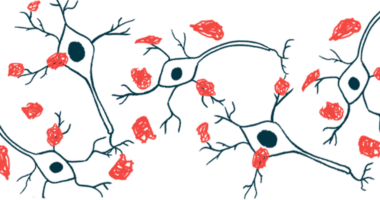The Early Signs of Parkinson’s That My Sister Experienced

We encounter signs almost every day of our lives. Traffic lights tell us when to stop or go, and road signs tell us which exit to take. Turn signals (when used) let us know if the car in front of us is turning left or right. Dark clouds in the sky indicate an impending thunderstorm.
But are there early signs of Parkinson’s disease (PD)?
My sister, Bev, wasn’t diagnosed with PD until 2017, though she’d been exhibiting physical signs for eight years that no one, including healthcare providers, had attributed to Parkinson’s.
She told me that while working as a nurse, and then as an echocardiography technician, she experienced the shaking of her head and left hand. Bev also had some issues with dizziness, balance, and walking.
“My patients were asking me if something was wrong because my head was shaking, and they thought I was seeing something wrong on their echocardiogram,” she said. “I never realized that my head was shaking at the time. My doctor at first thought it was just due to my aging.”
The Parkinson’s Foundation has shared 10 early signs of PD, including tremor, small handwriting, and loss of smell.
While younger people with early-onset PD may have some of the same signs and symptoms as older individuals, the onset may look different, so their issues may not be attributed to PD.
The American Parkinson Disease Association notes that, “Because the majority of people who get Parkinson’s disease are over the age of 60, the disease is often overlooked in younger people, leading many to go undiagnosed or misdiagnosed for extended periods of time.”
My sister was finally referred to a neurologist at the Cleveland Clinic Center for Neurological Restoration in Ohio, as her symptoms slowly but consistently progressed. After multiple tests, including an MRI, cognitive testing, and a movement and balance analysis, she was diagnosed with PD.
One of Bev’s early signs was weakness in her left hand, which she attributed to carpal tunnel syndrome. She regularly conducted echocardiograms and electrocardiograms, which required a lot of constant hand movement. She did not have stiffness or balance issues initially, but she did have a slight head tremor.
As Bev’s PD progressed, she noticed that her writing was changing. She now has stage 3 PD and said, “Sometimes I can’t read my own writing. I feel like it looks like chicken scratch!”
Abnormally small or cramped handwriting is known as micrographia. This sometimes appears as an early sign of PD, but not everyone with PD will develop it.
Bev also has issues with balance and leg weakness, and because of these, she does fall. She goes to physical therapy for strengthening and takes a falls prevention class offered in her community.
Bev always had a softer voice than me. After all, I was the younger sister and wanted to be heard! However, her voice has become increasingly low-pitched and she sometimes slurs a bit.
Bev also has problems with her sense of smell. She said, “I can’t smell much of anything anymore.” There could be a strong odor, like that of an onion, and she won’t smell it.
Bev also has cognitive issues, mostly related to her short-term memory.
Experiencing one of these signs doesn’t automatically mean someone has Parkinson’s, but the issue should still be brought to a healthcare provider’s attention.
Currently, there is no specific lab or imaging test that can detect PD. However, a test called DaTscan can assess dopamine levels in the brain and help indicate if a person might have Parkinson’s. This imaging test is similar to a CT scan, and involves injecting a drug into the bloodstream. Johns Hopkins Medicine notes that, “The drug binds to dopamine transmitters in the brain, showing where in the brain dopaminergic neurons are. (Dopaminergic neurons are the source of dopamine in the brain; a loss of dopamine is what leads to Parkinson’s.)”
The DaTscan can help your doctor confirm a diagnosis or rule out a disorder similar to Parkinson’s.
If you have Parkinson’s, what early signs did you experience? Let me know in the comments below.
***
Note: Parkinson’s News Today is strictly a news and information website about the disease. It does not provide medical advice, diagnosis or treatment. This content is not intended to be a substitute for professional medical advice, diagnosis, or treatment. Always seek the advice of your physician or another qualified health provider with any questions you may have regarding a medical condition. Never disregard professional medical advice or delay in seeking it because of something you have read on this website. The opinions expressed in this column are not those of Parkinson’s News Today or its parent company, Bionews, and are intended to spark discussion about issues pertaining to Parkinson’s disease.









Leave a comment
Fill in the required fields to post. Your email address will not be published.